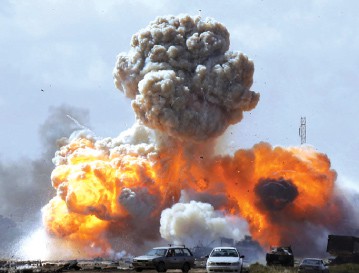
“Hundreds of Saudis have rallied in the eastern city of Qatif to blast the regime for its military intervention in #Bahrain. #SaudiArabia.” Tweets like these have become the norm in the Middle East, as social networking sites have evolved into the online headquarters for rebellion. Since the initial uprising in January in Egypt, there has been a string of similar incidents in Tunisia, Libya, Yemen, Bahrain and Syria. Protestors in Egypt began their fight on Jan. 25 against President Hosni Mubarak, who was in power for almost 30 years. After violent clashes, mostly based in Tahrir Square in Cairo and resulting in more than 300 deaths, Mubarak resigned on Feb. 11. Soon after, a referendum was held for constitutional changes to ensure competitive elections. Days later, Libyans began protesting Moammar Gadhafi, their leader for 32 years. Gadhafi responded with military force—after which many Libyan officials resigned, condemning his attacks. In March, the U.N. Security Council voted to permit “all means necessary” to establish a no-fly zone and impose a cease-fire. Gadhafi continued his attacks, causing the U.S. and other allies to enforce the no-fly zone. Meanwhile, fighting broke out in Bahrain between the minority ruling Sunnis and the majority Shiites, with the latter citing discrimination. And in Syria, under pressure from protestors, President Bashar al-Assad pledged to lift the state of emergency that had been in place since 1963, and which gave security forces the power to arrest people without a warrant or trial.
Through updates on Twitter and Facebook, the world continues to watch as those in the Middle East fight for better lives.





















